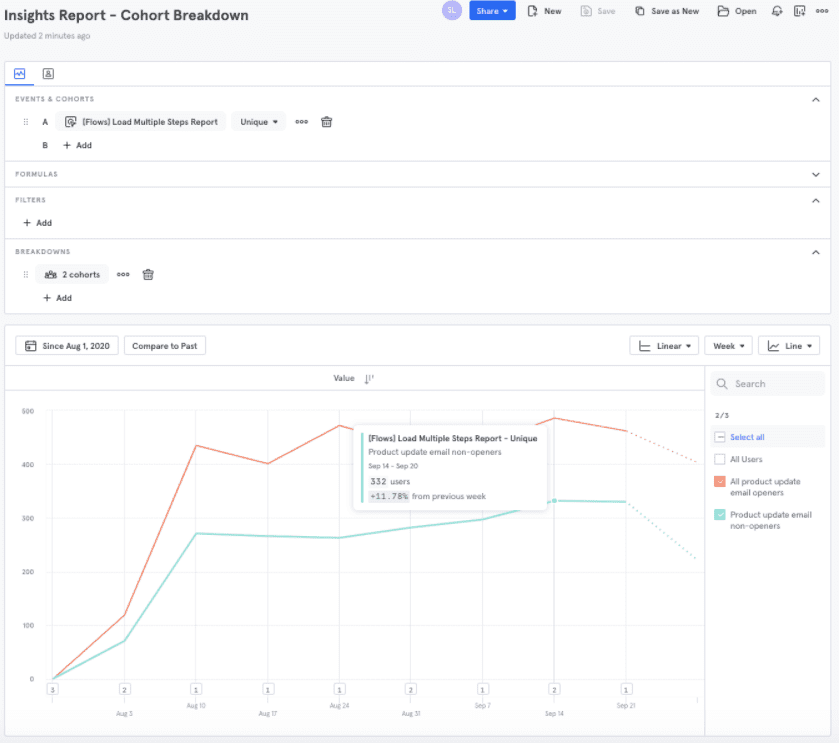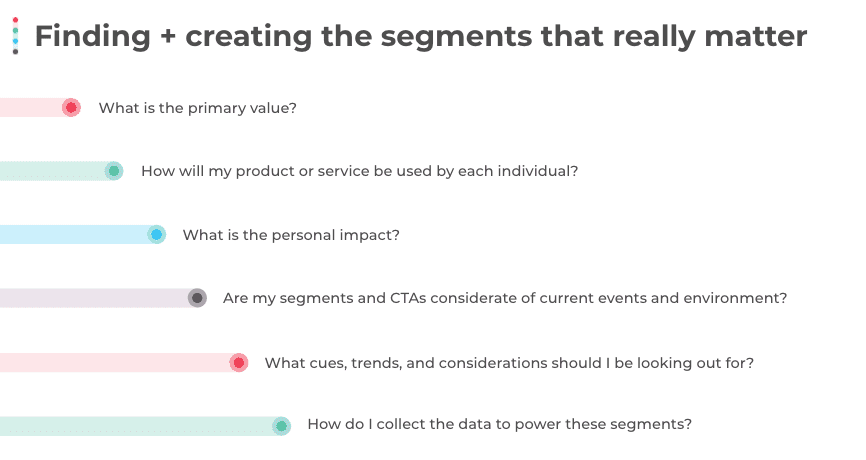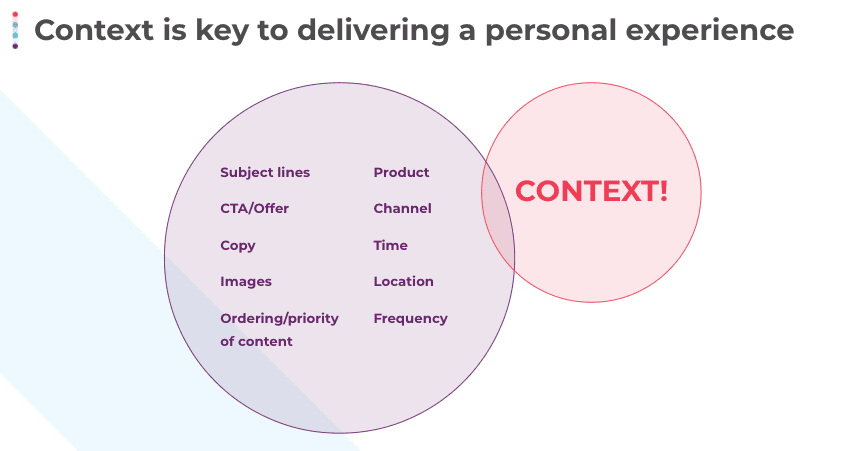Growth Marketing. You may think that it’s one of those ever-present business buzzwords we always hear. But unlike terms like “synergy” and “best practice,” growth marketing holds real significance. As growth marketing gains relevance, it’s important for marketers to understand what it means, so they can deploy it.
So what is growth marketing? It’s the practice of leveraging data to foster engagement, create meaningful relationships and increase customer lifetime value.
The difficulty of growth marketing, as you can see, isn’t in the definition. It’s in the application. Creating meaningful relationships is hard to do between two humans, so how is a brand expected to achieve intimacy with even one customer, let alone millions of them?
It’s difficult, yes. But things that matter are hard. And your customers certainly matter.
But building an effective growth marketing strategy is not impossible. Not even close.
5 Steps to Building an Effective Growth Marketing Strategy
Meet Garin Hobbs, resident expert on market insights at Iterable, and Sam Larsen, director of growth at Mixpanel, focused on helping businesses innovate by improving the customer experience through data.
They’re experts in customer relationship building, and recently they held a webinar to share five tried-and-true steps to building an effective growth marketing strategy.


Mixpanel and Iterable work together to walk you through the “5 Steps to Creating an Effective Growth Marketing Strategy.”
Step 1: Review Your Current Strategy
While it’s imperative to build your brand in your business’s vision, it’s much more important to visualize your business through your customers’ eyes. In today’s market, especially, few brands offer entirely unique products or services. It is when a marketplace is saturated with similar products that marketers should stop and think.
A few years ago, the question “Why go to you versus your competition?” would elicit responses like, “I’m cheaper than everyone else” or “We have a superior product.” And those answers were adequate because customers frequently made purchasing decisions along those lines.
Value and competitive advantage are interrelated and essential elements in maximizing revenue and understanding your current strategy. A true competitive advantage is one that cannot be duplicated. Price and product features were once a competitive advantage, but this is no longer the case.
Create an Emotional Connection
Now, the most effective way of differentiating your brand today is through emotional connection. Customers want to feel connected to a brand, and this is communicated through narrative, identity and values. In other words, the most effective growth strategy to attract engaged audiences today is by delivering meaning and values-based experiences to customers.
This is more commonly known as the “Sell a good night’s sleep, not a mattress” phenomenon. Customers today have a saturated product market to choose from. With more choices, they can be selective. A customer who is dealing with insomnia will choose the mattress brand that promises them the end to sleepless nights. If sustainability, as a value proposition, is important to a customer, they will be drawn to a mattress that makes ethically sourced materials a priority. You get the idea.
Get Strategic
Now let’s talk strategy. The most effective way for a brand to deliver value—and gain a competitive advantage over their competition—is by putting their customers at the forefront of the campaign creation process. Craft a customer-centric strategy, and your brand will resonate.
Here are a couple of questions to ask of your strategy:
- What type of relationship do we currently have with our customers?
- What type of relationship do our customers want and/or expect?
- Do we know our customers at that level?
- Do we have the data to surface the insights?
- What’s most important to each individual?
Review both the intent and the impact of your current strategy. Assess what is already resonating with customers. Mark what isn’t. This review process will unveil what you need to shift in your strategy, so you can invest in a competitive, consumer-centric advantage.
Step 2: Identify New Cohorts
Now that you have your customers at the forefront of your value proposition, you’re probably starting to realize that you have many customers, and each of them is unique. This means that the value you communicate should be nuanced and altered to account for various customer preferences.
The faster you know who your customers are, the quicker you can define your competitive advantage or value. This is where customer cohorts, and segmentation, comes into play.
Cohorts go beyond traditional demographic data points, like age or gender, to group similar customers based on rich user behavior insights. The cohorts that matter most will be unique to every business, but all brands can benefit from leveraging product analytics to group users with similar behavior patterns.
With clearly defined cohorts, it’s much easier to understand important trends in customer behavior and more effectively adjust your growth marketing strategy.
Cohort Identification in Action
Say, for example, you offer a meditation app and you’ve defined a goal of increasing daily active users because it’s tied to your business goals (e.g., retention) and customer value (e.g., frequent meditation provides the greatest mental health benefits for users).
Before you send any marketing communications, you’ll first want to understand the different groups of users and their level of app usage today.
In this case, you may define two key cohorts: Novice and Expert. Your Novice cohort may be new users or those who require more hand-holding to make the most of the content and features available. Meanwhile, your Expert cohort may be long-term users who already meditate frequently. This group will benefit more from advanced tips and tricks for optimizing their habits.
These cohorts are created based on an understanding of customer value and product usage trends, and they are unique to your business.
Define your Cohort
If you already have a product analytics solution like Mixpanel, you can define your cohorts in three steps:
- Hypothesize customer differences – consider different groups, use cases or needs, and preferences for interacting with your brand
- Isolate core behavioral and outcome metrics – start splitting these out by your hypothesized groups using your product analytics tool
- Lock in your cohorts – as you find important splits, save them as cohorts


Split out core outcome metrics by hypothesized groupings with Mixpanel’s Insights Report to define cohorts.
Regardless of what tool you use, Sam and Garin have two big tips: First, take it slow and avoid common pitfalls in segmentation. Second, as with anything in marketing, remember that it’s a process. Your cohorts can and should evolve over time as your marketing becomes more advanced, you learn more about customers, and your business evolves.
Step 3: Redraw the Lines of Segmentation
You’ve ID’d your cohorts and can now start thinking about how value aligns with your product or service. Before making any quick decisions, however, it’s important to consider the current environment in your strategy. Ask first if there is anything happening currently that could influence the relevance of your product or service.
Factors, such as COVID-19, social unrest and financial turmoil, are especially important to recognize. Think: how does the product or service I am delivering improve the life of the customer or allow them to live their values?
Here are some helpful questions to use as your guide when making your assessments.


Impress your audience by recognizing them for their unique interests, habits and preferences, and delivering personalized content that’s designed to captivate them.
If you don’t have the answers to these questions, or don’t have access to the customer data needed to power these segments, don’t sweat it. Look to user profiles for easily accessible information, then ramp up your data collection with progressive profiling, customer polling, etc.
While you’re waiting on that data, you can reference externally sourced data, like our Holiday Quick Poll, which asked consumers what they care about this holiday shopping season.
Step 4: Execute and Individualize
If nothing else, the events of 2020 have shown us that customer dispositions can change quickly and frequently. Think, for instance, about how COVID-19 has financially impacted folks around the world, and some people have been affected more than others. Should you really go chasing someone who might have lost their job last week with endless abandoned cart emails?
The answer is no, FYI.
In everything, context is key. And this is where empathy and being human comes into play (take that, robots!). Think about the consumer. Could we probably infer that their priorities have shifted during a global pandemic? Yes.
Data-Driven Individualization
The execution of this individualization is also possible for the not-so empathetically inclined, by getting data-driven and technical with your perceptions.
For instance, if you are seeing an uncharacteristic drop in conversions, or a rise in free app users, this might be an indication that some portion of your audience has been financially impacted by something going on.
Segments are a great start to personalization, but the ultimate goal is to take it one step further to a segment of one. This level of intimacy comes with creating context by personalizing everything you can, from copy to send time.


Personalization is both an art and a science, and mastering each will deliver marketing that is contextualized.
Step 5: Test and Optimize
Relevance is a moving target, so you need to consistently review your growth marketing strategy against campaign performance and analytical insights. Don’t be afraid to adjust as you go.
A great way to develop an effective testing program is to visualize an A/B test program structure.


A/B testing injects a healthy dose of reality into your campaigns. It’s all too easy for product designers, developers and marketers to fall in love with their own creations—A/B testing shows them what users really think.
How on earth do you know whether the campaign or tactic is working, and how do you continue driving incremental growth? Test, iterate and avoid common roadblocks while you’re at it.
Your Growth Marketing Gut Check
Before you continue, it’s important to make sure you level-set. Answer this question (mentally):
“On a scale of 1 – 5, how confident are you in your ability to use your data to drive value for your customers and business?”
When Garin and Sam asked this question of the audience, 70% of attendees selected 3 or less in their confidence level. So if you believe data is important to decision-making but struggle with how to use it effectively, you’re not alone.
Wherever you are on the data confidence scale, you’ve come to the right place. Because it’s the perfect time to conduct a growth marketing gut check.
The whole team at Iterable is excited to introduce to you a valuable new tool: our Personalization Maturity Model. By taking a quick quiz, you will be able to understand where you stand with regard to the core pillars of personalization, and your results will allow you to uplevel your growth marketing strategy for next year.































